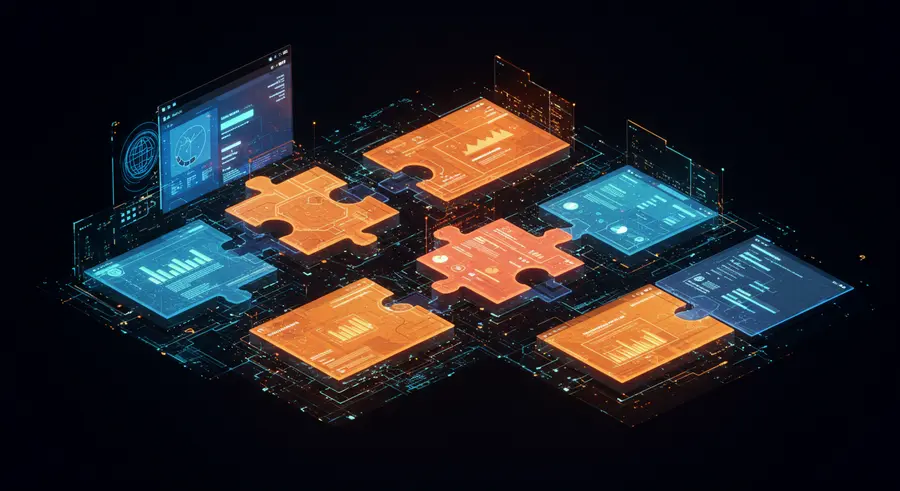Appearance

Welcome, fellow developers! 👋 Today, we're diving deep into an architectural pattern that's reshaping how we build web applications: Micro Frontends. If you're familiar with microservices on the backend, imagine bringing that same modularity, autonomy, and scalability to your frontend. That's precisely what micro frontends offer!
What Exactly Are Micro Frontends?
Inspired by the success of microservices, micro frontends advocate for breaking down a monolithic frontend application into smaller, independently developed, and deployable units. Each of these "micro-apps" can be built by different teams, using different technologies, and deployed independently.
Think of it like building with Lego blocks. Instead of one giant, interconnected structure, you have many smaller, self-contained blocks that fit together to form the complete application.
Why the Buzz Around Micro Frontends? 🌟
The traditional monolithic frontend, while seemingly simpler at first, often becomes a bottleneck as applications grow. Here's why micro frontends are gaining immense popularity:
- Scalability & Team Autonomy: Large teams can work on different parts of the application simultaneously without stepping on each other's toes. This accelerates development and reduces coordination overhead.
- Technology Agnostic: Each micro frontend can choose its own framework (React, Vue, Angular, etc.). This means you're not locked into a single technology, allowing teams to pick the best tool for the job or even gradually migrate legacy parts.
- Improved Maintainability: Smaller, focused codebases are easier to understand, debug, and maintain.
- Independent Deployments: Changes to one micro frontend don't necessarily require redeploying the entire application, leading to faster release cycles and reduced risk.
- Enhanced Fault Isolation: If one micro frontend goes down, the rest of the application can remain functional, providing a more resilient user experience.
When to Consider Micro Frontends? 🤔
While the benefits are compelling, micro frontends aren't a silver bullet for every project. They shine brightest in these scenarios:
- Large, Complex Applications: Especially those with multiple features or domains where different teams can own distinct parts.
- Organizations with Multiple Teams: When different teams are responsible for different parts of a user experience.
- Long-Lived Applications: Where gradual upgrades and technology migrations are a concern.
- Desire for Technology Flexibility: If you want to use different frontend frameworks or gradually introduce new ones.
How Do They Work? 🛠️
Several approaches exist for composing micro frontends:
- Build-time Integration: Micro frontends are published as packages and integrated into a host application during the build process.
- Run-time Integration (Client-Side): This is a popular approach where a shell application dynamically loads and renders micro frontends in the browser. Technologies like Webpack 5's Module Federation or single-spa are excellent for this.
- Run-time Integration (Server-Side): The server composes the different micro frontends before sending the complete page to the client.
Real-World Examples 🌐
Imagine an e-commerce website. Instead of one massive frontend, you could have:
- A "Product Listing" micro frontend.
- A "Shopping Cart" micro frontend.
- A "User Profile" micro frontend.
- A "Checkout" micro frontend.
Each is developed and deployed independently, but they all seamlessly come together to form the complete e-commerce experience.
Challenges to Be Aware Of 🚧
Like any architectural pattern, micro frontends come with their own set of challenges:
- Increased Complexity: While individual parts are simpler, the overall system's complexity increases due to inter-micro frontend communication, shared dependencies, and routing.
- Communication Overhead: Deciding how micro frontends communicate (e.g., via shared events, custom APIs) requires careful planning.
- Styling Consistency: Ensuring a consistent look and feel across different micro frontends can be tricky. Design systems and shared component libraries are crucial here.
- Performance: Loading multiple independent applications can impact initial load times if not optimized.
Conclusion ✨
Micro frontends offer a powerful way to build scalable, resilient, and maintainable web applications, especially for large organizations and complex products. By embracing modularity and team autonomy, they empower development teams to deliver features faster and adapt to changing requirements with greater agility.
For more insights into modern software engineering practices, explore our catalogue here: https://techlinkhub.xyz/catalogue/software-engineering/
What are your thoughts on micro frontends? Share your experiences in the comments below! 👇